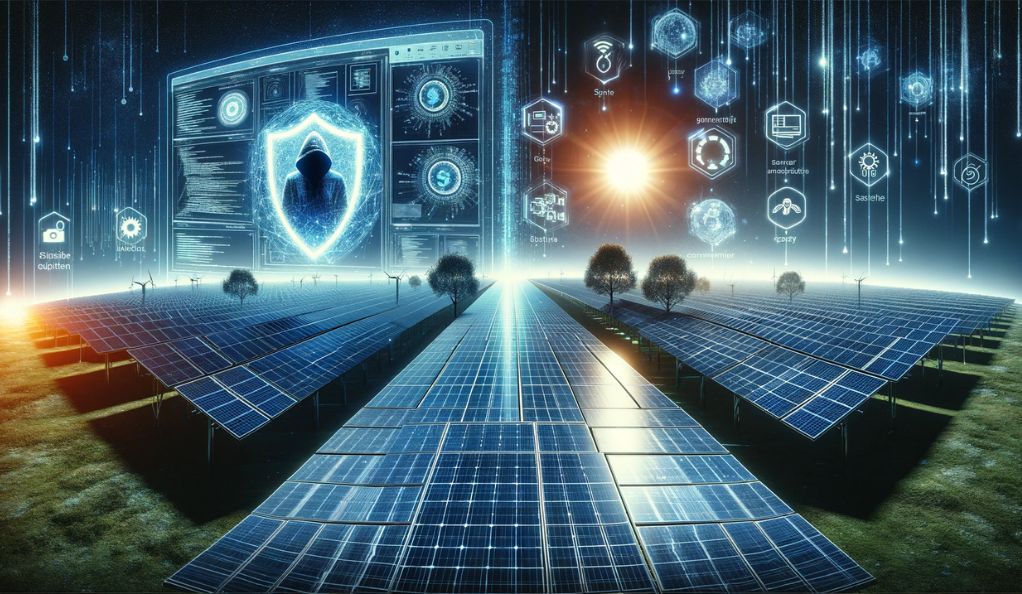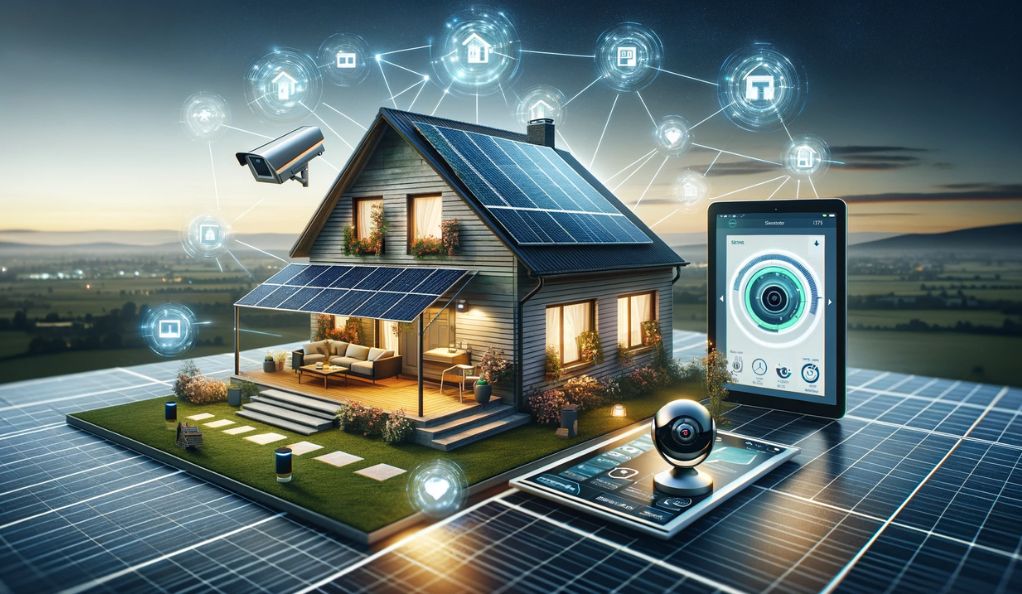The adoption of residential solar systems is a trend that has been on the rise globally, signifying a shift towards more sustainable and eco-friendly living. These systems, which convert sunlight into electricity, are increasingly popular due to their potential to reduce utility bills, increase energy independence, and contribute to environmental protection. However, as with any significant investment, the security of residential solar systems is paramount to ensure their long-term viability and efficiency.
The Rising Popularity of Residential Solar Systems
Residential solar systems are becoming a common sight on rooftops across the world, from urban to rural areas. This surge in popularity can be attributed to several factors:
- Environmental Benefits: Solar energy is clean and renewable, reducing reliance on fossil fuels and lowering carbon footprints.
- Economic Incentives: Many regions offer tax credits, rebates, and other incentives for solar system installation.
- Advancements in Technology: Continuous improvements in solar technology have made systems more efficient and affordable.
- Energy Independence: Solar systems provide a way to generate one’s own electricity, offering protection against rising energy costs and potential grid instability.
Importance of Solar System Security
The security of a solar system is integral to its functionality and longevity. The risks associated with solar systems can be broadly categorized into two types: physical and cyber threats.
- Physical Threats: These include risks such as theft or damage to the solar panels, inverters, and other components, either due to environmental factors or vandalism.
- Cyber Threats: As many modern solar systems are connected to the internet for monitoring and control purposes, they are susceptible to cyber attacks that could disrupt their operation or even pose a broader threat to the electrical grid.
Understanding Solar System Components and Vulnerabilities
To effectively secure a residential solar system, it’s essential to have a clear understanding of its components and the specific vulnerabilities associated with each. A typical residential solar system comprises several key elements: solar panels, inverters, batteries, and the connection to the grid. Each of these components plays a critical role in the system’s overall functionality and is subject to unique security risks.
Key Components of a Residential Solar System
1. Solar Panels: These are the most visible part of the system, responsible for capturing sunlight and converting it into electricity.
- Vulnerabilities: Physical damage (due to environmental factors or vandalism), theft.
2. Inverters: Inverters convert the direct current (DC) generated by the panels into alternating current (AC) used in homes.
- Vulnerabilities: Cyber threats due to internet connectivity for performance monitoring, physical damage, and electrical malfunctions.
3. Batteries (if present): Batteries store excess energy generated by the panels for use when sunlight is not available.
- Vulnerabilities: Physical damage, improper installation or maintenance leading to reduced efficiency or safety hazards.
4. Grid Connection: Most residential solar systems are connected to the public electricity grid.
- Vulnerabilities: Dependency on grid stability, potential for backfeeding issues during outages.
Cybersecurity Threats to Solar Systems

As residential solar systems become more technologically advanced, they also become more vulnerable to cybersecurity threats. This section explores the potential cyber threats faced by these systems, particularly focusing on the vulnerabilities of internet-connected inverters, and provides guidelines for mitigating these risks.
The Internet of Things (IoT) and Solar Systems
Modern solar systems often include components that are part of the Internet of Things (IoT), primarily inverters. These devices do more than just convert DC to AC; they also monitor system performance and communicate data back to the homeowner and, in some cases, to the utility company or solar provider.
Vulnerabilities of Connected Inverters:
- Unauthorized Access: Just like any internet-connected device, inverters can be susceptible to hacking, allowing unauthorized access to the system.
- Data Breach: Inverters often store and transmit sensitive data, which can be compromised in a cyber attack.
- System Sabotage: Hackers can potentially control the inverter, causing system malfunctions or shutdowns.
- Grid Instability: In a worst-case scenario, compromised inverters could affect the stability of the local power grid.
Preventative Measures and Industry Standards
To counter these threats, several measures and standards have been established:
- Regular Software Updates: Keep the inverter’s firmware and any associated software updated to patch security vulnerabilities.
- Strong Passwords and Authentication: Use strong, unique passwords and consider multi-factor authentication for system access.
- Firewalls and Encryption: Implement firewalls and ensure data encryption during transmission.
- Compliance with Standards: Ensure your system complies with standards such as IEEE 1547 and Underwriters Laboratories’ requirements, which include cybersecurity considerations.
- Regular Security Audits: Conduct periodic security audits to identify and address vulnerabilities.
Cybersecurity Best Practices for Homeowners
As a homeowner, you can take several steps to secure your solar system against cyber threats:
- Stay Informed: Be aware of the latest cybersecurity threats and the measures to counter them.
- Choose Secure Products: Opt for inverters and other components from reputable manufacturers that prioritize security.
- Professional Installation and Maintenance: Ensure your system is installed and maintained by certified professionals who understand the cybersecurity implications.
- Monitor System Activity: Regularly check your system’s performance data for any unusual activity.
Physical Security Measures for Solar Installations
When it comes to securing residential solar systems, physical security measures are just as crucial as cybersecurity. This section discusses the best practices for protecting solar panels and batteries from physical threats like theft or environmental damage, along with considerations for enhancing security during installation and maintenance.
Protecting Solar Panels
Solar panels are typically the most exposed and valuable components of a solar system, making them a target for theft and damage. Here are some strategies to enhance their security:
- Mounting and Locking Mechanisms: Use tamper-proof mounting systems and locking mechanisms to secure panels to their mounts, making them difficult to remove without specialized tools.
- Strategic Placement: Install panels in less accessible locations, if possible, to deter theft. Panels placed on rooftops are generally safer than those installed at ground level.
- Durable Framing and Covers: Use sturdy, weather-resistant materials for framing and covering solar panels to protect against environmental damage.
- Surveillance and Lighting: Implement security cameras and motion-sensor lights around the installation area to deter thieves and vandals.
- Alarm Systems: Integrate alarm systems that trigger if the solar panels are tampered with or removed.
Securing Batteries
Solar batteries are crucial for energy storage systems, and safeguarding them is vital. This involves storing batteries in secure, lockable enclosures to prevent unauthorized access, maintaining a climate-controlled environment to protect against extreme temperatures and moisture, conducting routine inspections for tampering or damage, and adhering to safe installation practices such as grounding and flood protection. These measures ensure the reliability and longevity of solar battery systems.
Installation and Maintenance Considerations
The way solar systems are installed and maintained can significantly impact their physical security:
- Professional Installation: Utilize certified professionals for installation to ensure that all components are securely and correctly mounted.
- Maintenance Schedule: Establish a regular maintenance schedule to inspect and repair any security vulnerabilities.
- Quality of Components: Use high-quality, durable materials and components that can withstand environmental stress and potential tampering.
- Documentation and Insurance: Keep detailed documentation of your solar system and consider insurance policies that cover theft and damage.
Integrating Solar Systems with Home Security Solutions

The integration of residential solar systems with home security solutions offers an enhanced layer of protection and monitoring. This section will explore how solar systems can be incorporated into existing home security infrastructure and the use of technology for efficient monitoring and management.
Synergy Between Solar Systems and Home Security
Solar systems and home security solutions can work in tandem to provide a more comprehensive security strategy. Here’s how:
- Connect with Security Systems: Solar setups can link to home security systems, triggering alarms or alerts for tampering or unauthorized access.
- Remote Monitoring: Modern solar devices offer remote monitoring. Integrating with security apps allows homeowners to oversee both solar performance and security on one platform.
- Automated Responses: Integration with smart homes enables automatic reactions to security breaches, like turning on lights or shutting down the system.
- Data Collection: Security systems gather data on solar performance and security incidents, aiding threat response and system understanding.
Considerations for Integration
To effectively integrate solar systems with home security, certain considerations should be kept in mind:
- Compatibility: Ensure that the solar system’s monitoring tools are compatible with the existing home security infrastructure.
- Professional Installation and Setup: Engage professionals who are experienced in both solar system and security system installations to ensure seamless integration.
- Reliable Connectivity: Ensure that the systems have a reliable internet or network connection to facilitate real-time monitoring and alerts.
- Regular Updates and Maintenance: Keep both systems updated with the latest software to protect against new threats and maintain optimal performance.
Maintenance and Monitoring for Long-Term Security
Proper maintenance and monitoring are essential for ensuring the long-term security and efficiency of residential solar systems. This section covers the key aspects of maintenance and monitoring practices that homeowners should adopt to safeguard their solar investment.
Regular Maintenance: Key to Longevity
Routine maintenance is crucial for keeping solar systems functioning optimally and securely. Here are the main components to focus on:
- Solar Panel Cleaning: Panels should be cleaned regularly to remove dust, dirt, and debris that can obstruct sunlight and reduce efficiency.
- Inspection of Connections and Mounts: Regular checks of the panel mounts, connections, and wiring are necessary to prevent physical damage and ensure secure attachments.
- Inverter Health Check: The inverter should be inspected for signs of wear and tear, overheating, or malfunction.
- Battery Maintenance: For systems with battery storage, periodic checks on the battery health, connections, and the environment where they are stored is essential.
Monitoring Systems: Real-Time Checks
Effective monitoring systems are essential for ensuring the security and efficiency of solar installations. They offer real-time data on energy production, consumption, and system efficiency. These systems also provide alerts for malfunctions, performance drops, or security breaches, enabling quick responses. Remote access and control empower homeowners to manage their systems conveniently. Moreover, storing historical data allows for trend analysis, identifying potential issues, and improving overall system performance. A comprehensive monitoring system is key to maximizing the benefits of solar installations.
Conclusion
Securing a residential solar system is a multifaceted endeavor, encompassing both cyber and physical security measures. From understanding the components and their vulnerabilities to integrating with home security systems, proactive maintenance, and staying abreast of emerging technologies, this article has covered essential strategies to protect your solar investment. Adopting these practices ensures that your move towards sustainable energy is not only environmentally sound but also secure and efficient, allowing you to reap the benefits of solar power with peace of mind.
